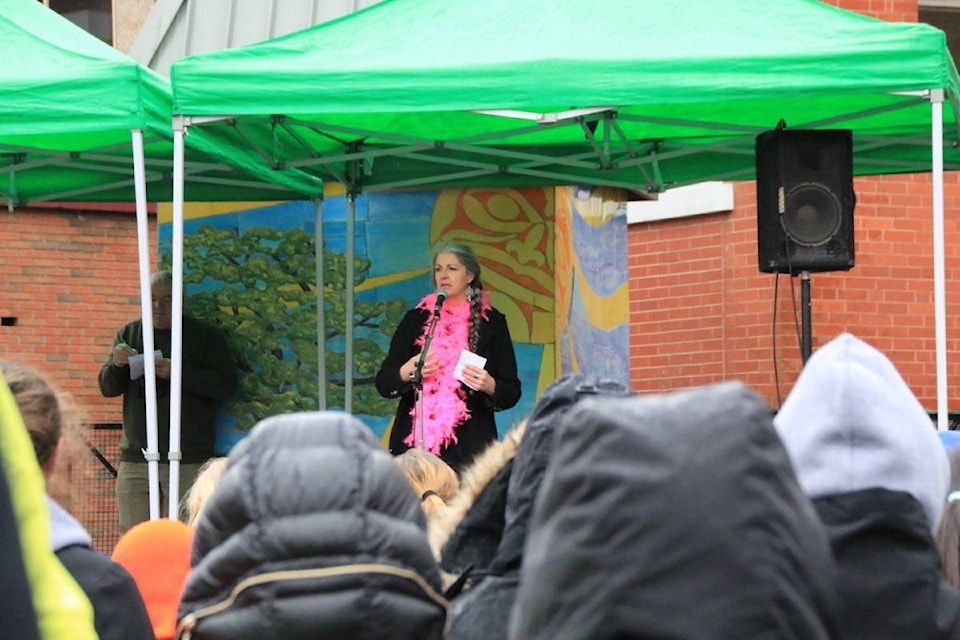By Kendra Thomas
Nov. 22-28 is Victims and Survivors of Crime Week, and Warmland Women’s Support Services is turning the spotlight on sexual exploitation of youth.
The theme of the week, “Recognizing Courage, Renewing Commitment”, recognizes the great courage of survivors and their families to persevere in the aftermath of crime. Warmland Women’s Support Services invites community members to their online event “Love Bombing 101” on Nov. 26, which also falls during the 16 Days of Activism Against Gender Violence — a time when all community members can reflect on actions that eliminate violence against women and young girls.
“Love Bombing” is the intentional development of a dependency relationship for the sole purpose of sexual exploitation and/or trafficking. It is a lucrative enterprise with low risks for perpetrators. Profits from forced sexual exploitation have been pegged at $99 billion annually. One sex trafficking victim can generate between $168,000 to $336,000 per year.
RELATED: Documentary exposes youth sex trafficking in Greater Victoria
RELATED: Hotline to combat human trafficking launches Canada-wide
Although marginalized youth are at greater risk, there is no victim profile — any race, culture, or class from impoverished to wealthy are vulnerable, with the average age of recruitment being 13-14.
Twenty-five per cent of Canada’s human trafficking victims are under age 18, 50 per cent are age 18-24, and 41 per cent of perpetrators are age 18-24. There is no trafficker profile either — from 16 year old boys to tattooed gang members, scouts seek customers (not just victims) at shopping malls, bus stops and parties. 12th graders recruit seventh graders. Girls already being trafficked trafficking other girls.
In this age of social media, youth and persons with intellectual disabilities are vulnerable and developmentally unprepared to deal with the very real dangers associated with sexual exploitation. Many don’t recognize when they are on a path toward sex trade involvement. They become victims of persons who establish friendly or loving relationships with them.
Today’s youth are technologically savvy but can they detect sophisticated recruitment tactics and manipulative grooming strategies? Can caregivers protect youth from adolescent denial?
“You’re over reacting! Nothing bad is going to happen (insert teen disdain and rolling eyeballs).”
Understanding the complexities of a trafficking situation is key to the successful intervention of it. “Love Bombing 101” is a free webinar presented by Children of the Street Society with special guest sexual health educator Kerri Isham, funded by the Department of Justice Canada on Nov. 26 at 1 p.m.
It is open to all persons concerned with the wellbeing of our most precious resource — our youth. Contact kthomas@warmlandwomen.org or 250-710-8177 for registration details.
Love bombing is most often used to intentionally develop a dependency relationship and drug use and addiction was common among children/youth involved in the sex trade. It can be a reason why children enter the sex trade and a mechanism used to cope with the situation. In extreme situations, pimps and gang leaders used drug debt bondage to control victims.
Youth sexual exploitation statistics show the most at risk are runaway children, throwaway (unwanted) children, youth living independently when they reach 16 years of age and children using Internet communications to solicit sex trade clients.
It was observed that these groups of children lacked supervision, which placed them in situations of risk while underage and developmentally unprepared to deal with the dangers associated to the sex trade, like drug addiction and manipulation and control by others. In some cities and towns, black and aboriginal children were at higher risk.
The reasons why children end up in sexually exploitative situations were varied. In some cases, children work in the sex trade to survive or to support an addiction. Other children became involved because a boyfriend, friend or family member encouraged them to do so, while in other cases force was used to compel their participation. In addition, some underage girls were groomed to enter into high-end sex trade when they reached 18 years of age, which is operated indoors, highly organized, expensive and exclusive.
Children victimized through their involvement in the sex trade often lacked the knowledge of where to turn for help in many situations, including leaving the sex trade.
Several support mechanisms, as identified, would help protect them from further harm and ensure their safety. These are as follows: strengthening the investigative coordination between child services and police; assigning a higher level of priority to the investigation of missing, runaway and other marginalized children; and where necessary, developing additional and more stringent screening tools to identify more accurately children at risk of recruitment and possible trafficking when they leave home or care.
Kendra Thomas is the society coordinator at the Duncan-based Warmland Women’s Support Services Society. For more news from Vancouver Island and beyond delivered daily into your inbox, please click here.
